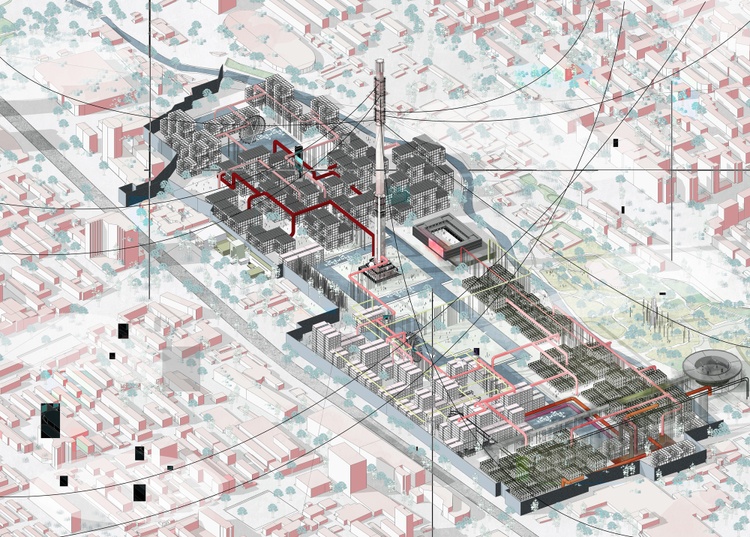A Comprehensive Summary of Architectural Styles and Their Impact on Modern City Preparation and Advancement
Architectural styles have actually long offered as a mirror to the societal worths and technical developments of their time, playing an essential role in shaping contemporary city preparation and development. From the grandeur of Neoclassicism to the practical approach of Brutalism, each style has actually introduced unique principles that influence city aesthetics and capability.
Historical Summary of Building Designs

As societies transitioned through the Center Ages, Gothic style arised, characterized by its verticality and intricate describing, matching the spiritual goals of the era. The Renaissance noted a resurgence of classical ideals, combining art and design in innovative means that affected subsequent designs across Europe.

Today, architectural designs continue to develop, driven by globalization and sustainability problems, reflecting a vibrant interaction between heritage and advancement. This historic overview highlights the value of architecture as a mirror of societal advancement and as a catalyst for metropolitan advancement.
Secret Architectural Styles Explained
The variety of building styles reflects the myriad impacts that shape our constructed atmosphere, each personifying unique attributes and social importances. Key architectural styles consist of Timeless, Gothic, Baroque, Innovation, and Postmodernism, each standing for unique historical contexts and aesthetic viewpoints.
Classic style, rooted in old Greece and Rome, stresses proportion, percentage, and using columns (cda architects). In contrast, Gothic architecture, growing in the center Ages, is identified by sharp arcs, ribbed safes, and flying buttresses, producing an ethereal quality in cathedrals. Baroque architecture, arising in the 17th century, is noted by majesty, intricate embellishment, and a dynamic interaction of light and darkness
Innovation, which gained momentum in the early 20th century, prioritizes function over form, making use of brand-new materials like steel and glass to create minimal frameworks. Postmodernism, responding versus the austerity of Modernism, accepts eclecticism and historical recommendation, typically including lively elements and paradox.

Effect On Urban Preparation
In shaping the advancement of cities, architectural designs dramatically affect metropolitan preparation choices. The option of architectural style often dictates the appearances, capability, and overall personality of metropolitan settings.
Furthermore, architectural styles can influence zoning policies and land utilize policies. Urban planners must think about the dominating architectural fads when designing areas, ensuring that brand-new advancements balance with existing structures. This factor to consider promotes natural metropolitan landscapes and boosts neighborhood identification.
The application of certain building styles can also affect socioeconomic factors within a city. For instance, premium contemporary layouts might bring in affluent homeowners and services, causing gentrification, while more budget-friendly housing remedies could prioritize sensible and sustainable styles to accommodate varied populations. Eventually, the interaction between architectural styles and urban preparation creates dynamic cities that reflect both historic context and modern demands, shaping the lived experiences of their occupants
Sustainability and Modern Architecture
Building designs weblink play a crucial function in addressing contemporary difficulties, especially in the realm of sustainability. As city locations increase and ecological issues intensify, modern style progressively embraces sustainable design concepts that prioritize energy efficiency, source conservation, and very little eco-friendly effect.
Contemporary architectural motions, such as biophilic style and eco-friendly design, advocate for structures that integrate with their surroundings, making use of natural products and promoting biodiversity. These styles frequently integrate eco-friendly energy sources, such as photovoltaic panels and wind generators, to decrease dependence on nonrenewable fuel sources and reduced carbon footprints.
Moreover, the integration of sophisticated modern technologies, such as smart structure systems, enhances energy management, enhancing resource use while making look at here now sure occupant comfort. Innovative water administration techniques, consisting of rain harvesting and greywater recycling, additional add to lasting metropolitan environments.
Significantly, sustainability extends past environmental problems; it encompasses social and financial dimensions also. By fostering neighborhood wellness and promoting inclusivity, modern-day building designs align with sustainable growth objectives. Subsequently, the advancement of building methods remains to form resilient cities that not just satisfy the needs of today however likewise guard the future for generations ahead.
Community Interaction in Style
Area involvement in design offers as a vital bridge between engineers and the populaces they serve, ensuring that the developed environment mirrors the requirements and aspirations of its individuals. This collaborative procedure welcomes area participants to add their understandings and preferences, promoting a feeling of ownership and obligation toward the rooms they occupy.
Reliable area involvement utilizes various techniques, such as workshops, studies, and public discussion forums, to gather varied perspectives. These techniques help with a two-way discussion, permitting engineers to recognize local contexts while empowering residents to voice their worries and needs. This inclusivity not only enhances the style high quality webpage however additionally advertises social equity by addressing the distinct challenges faced by marginalized teams.
In addition, community involvement can result in cutting-edge options that could not arise in a traditional style procedure. By integrating regional expertise and cultural values, architects can develop rooms that reverberate even more deeply with users, improving use and sustainability. Ultimately, prioritizing neighborhood interaction in layout processes leads to environments that support social interactions, assistance wellness, and reinforce neighborhood ties, consequently playing a pivotal role fit contemporary metropolitan landscapes.
Conclusion
Building styles have actually exceptionally affected contemporary city preparation and growth, showing progressing social and technological contexts. The integration of historic appearances with contemporary needs promotes metropolitan settings that prioritize sustainability and neighborhood engagement. As cities proceed to expand and adjust, the recurring dialogue in between building heritage and modern-day design concepts will remain necessary in producing inclusive, lively spaces that enhance high quality of life and promote social equity. The future of urban advancement joints on this harmonious balance.